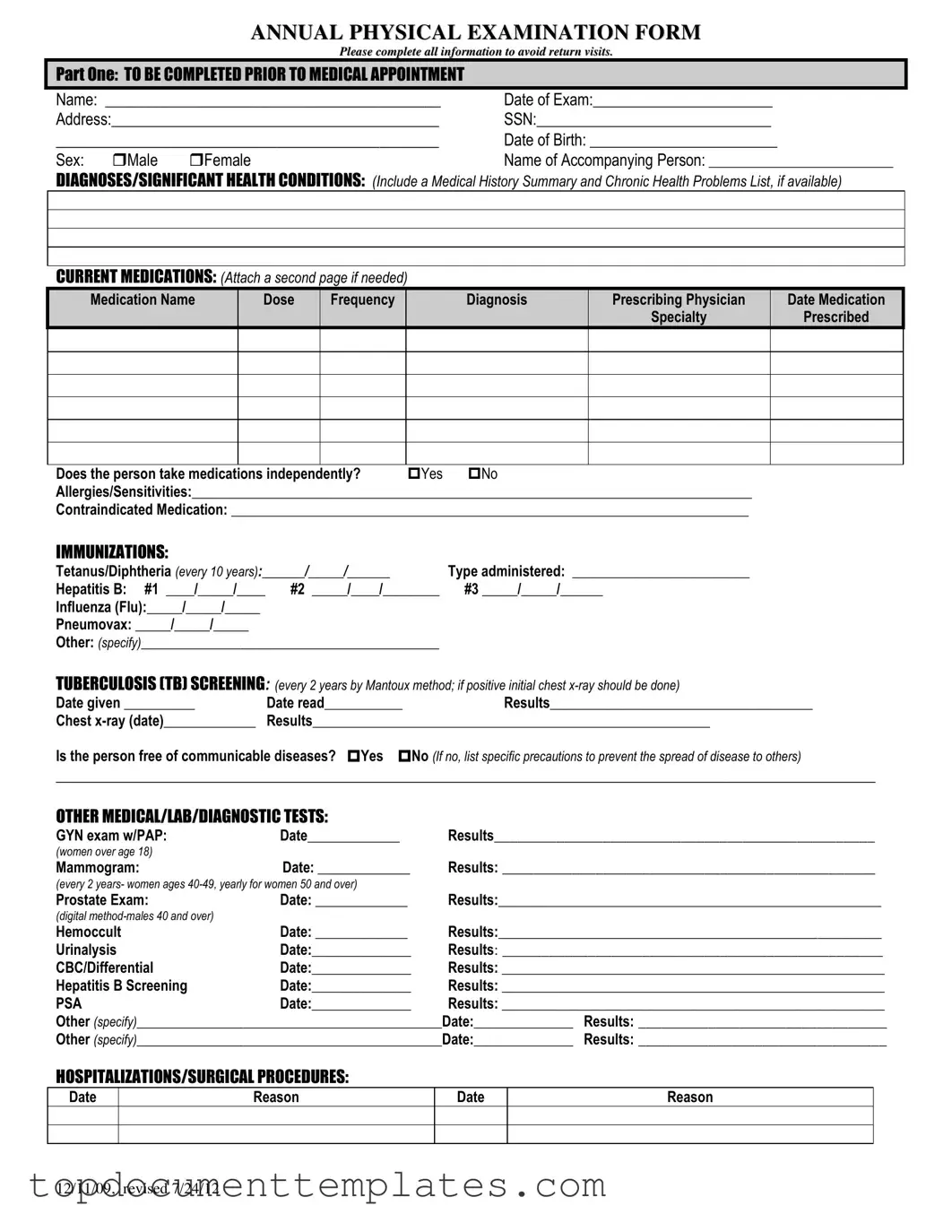The Annual Physical Examination form is an essential tool for gathering comprehensive health information before a medical appointment. This form requires individuals to provide personal details such as their name, date of birth, and address. It also asks for the name of an accompanying person, if applicable. A significant section is dedicated to medical history, where patients can list any diagnoses, chronic health problems, and current medications. This section helps healthcare providers understand the patient's background and tailor their examination accordingly. Additionally, the form includes a record of immunizations, tuberculosis screening, and various medical tests, ensuring that no important health aspects are overlooked. The physical examination part assesses vital signs and evaluates different body systems, allowing for a thorough review of the patient’s health. Lastly, it encourages patients to share any limitations, special instructions, or changes in their health status, fostering open communication between the patient and healthcare provider.
